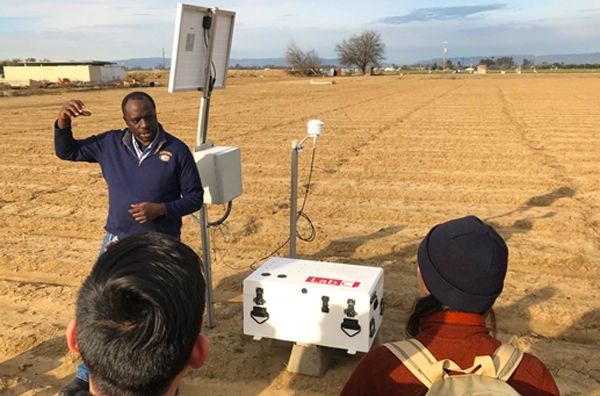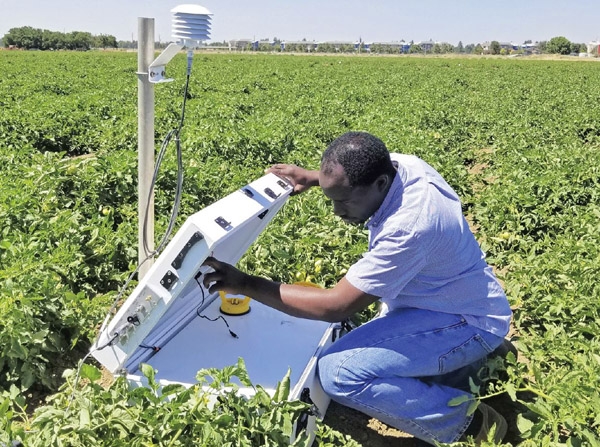Climate variability, competition for water from other users including urban and environmental, and groundwater depletion threaten the sustainability of irrigated agriculture. To face these challenges, the irrigation industry must develop and adopt innovative technologies and management practices that optimize economic outcomes, while also minimizing environmental impact.
Lately, there is no shortage of irrigation technologies hitting the market. To get a glimpse of what is out there, I recommend visiting the annual Irrigation Show held each December, as well as other annual farm shows such as the World Ag Expo.
Changes since the 80s
Since the late 1980s, there has been high adoption of irrigation application technologies, specifically a shift from flood irrigation to pressurized systems. Two examples are the use of microirrigation in California and center pivot irrigation systems in the Ogallala Aquifer region of the U.S. High Plains. The high adoption of these irrigation systems can be attributed to government incentives but, more importantly, to their proven ability to enhance production or ease management. We are seeing increasing interest in mechanized sprinkler irrigation systems for some crops in California due to their proven ability to improve management. For example, growers can automatically control several center pivots using mobile apps or control drip irrigation blocks using web apps.
However, when it comes to irrigation scheduling, the story is very different. According to data from the U.S. Department of Agriculture Irrigation and Water Management Survey, the adoption rates of advanced irrigation scheduling technologies are less than 21 percent. I use the term “advanced irrigation scheduling” to refer to irrigation scheduling based on soil moisture sensors, evapotranspiration programs, plant-based sensors, and crop simulation models. Over 70 percent still use traditional methods of irrigation scheduling such as observing crop conditions, soil feel, water delivery schedule, or watching neighbors. The next survey will be released late this year or early 2020, and it will be interesting to see what has changed as more technologies get developed or refined.
Convincing growers
I recently attended the California Irrigation Institute conference, and one of the presenters who is also an irrigation dealer shared his experiences on why growers continue to use historical methods to schedule irrigation. He said that growers will not widely adopt the latest irrigation scheduling technologies unless they are mandated to do so through regulation or convinced that the technology will improve profitability.
I will focus on the latter reason noted for lack of adoption. A golden opportunity exists for an irrigation scheduling technology that is simple, integrates easily with existing systems on the farm, and can demonstrate return on investment. There also needs to be a shift in the business model from that which focuses on selling hardware or equipment to one focused on selling solutions that address clearly identified needs. There are many existing technologies with a lot of potential, and many land-grant universities have also developed irrigation schedulers that are free and robust (e.g., CropManage, KanSched, Wise, iCrop, and more).
The latest innovations in artificial intelligence and cloud computing combined with the ability to collect large volumes of data from low-cost soil water sensors, plant water status sensors, drones, airplanes, and satellites present opportunities for optimized irrigation water management on an individual farm-by-farm basis.
Precision irrigation is a very interesting concept that, if implemented properly, could transform irrigation management and improve economic and environmental outcomes. You can think of precision irrigation as a systems approach to irrigation management in which the irrigation system knows what to do, knows how to do it, knows what it has done and how it effects the overall production goals, and then learns from what it has done before performing the next irrigation. You can imagine such a system as having a brain and capable of not just automatic but autonomous operation of the entire irrigation system similar to a self-driving car.
While I confess that this is more of a vision for the future, we need a disruptive irrigation management technology that will meet growers' various goals, including production, regulatory compliance, labor shortages, water and energy use efficiency, greenhouse gas reduction, etc. In the same way that we all have smartphones because they have proven to be very useful gadgets for doing more than making calls, I envision precision irrigation technology being widely adopted because it meets a grower's real-world needs.
Isaya Kisekka, PhD, is an assistant professor of agricultural water management and irrigation engineering in the departments of land, air, and water resources and biological and agricultural engineering at UC Davis. This article was republished with permission from Irrigation Today (2019), Vol. 3, Issue 4, p. 28-29.

